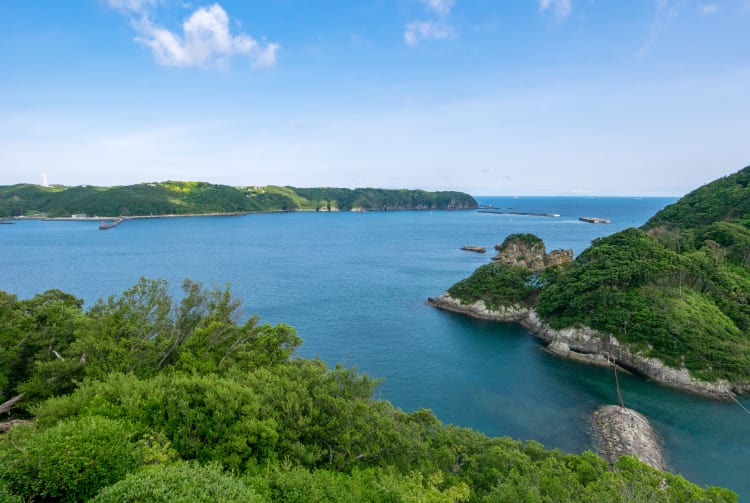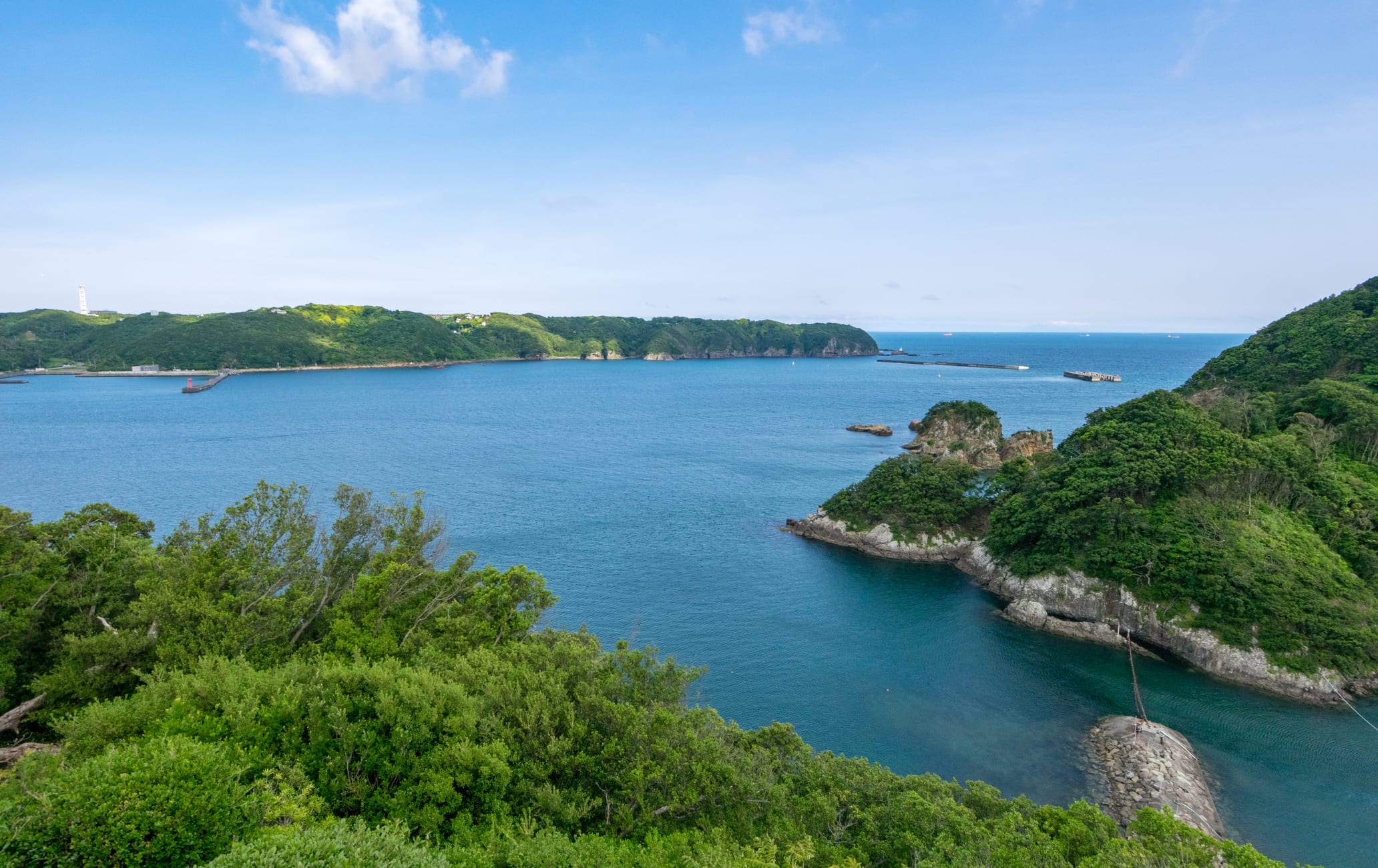The West's first modern-era foothold in Japan is now a dedicated sun, surf and sand getaway
Shimoda is a resort town situated at the southeastern end of the Izu Peninsula . The beach town's easygoing nature belies the fact that when U.S. diplomat Townsend Harris negotiated a trade treaty here in 1858, he effectively ended Japan's centuries of self-imposed isolation from the West and opened it to trade, which led to the end of samurai rule.
What people come to Shimoda for now, though, is fun and sun. Surfers flock here to ride waves at the long stretches of beach at Shirahama , Kisami Ohama, and Iritahama, as well as to more secluded coves like Tatadohama. The sand is soft, white, and beautifully clean, and the waves range from steady breaks to challenging swells. Shimoda is excellent for family outings as well.
Veteran divers should look to Mikimoto, an island near Shimoda, for colorful coral and lots of larger creatures, including sharks, tuna, and rays.
Don't Miss
- The white sand beaches and surf at Shirahama
- Exploring the funky nightlife options along Perry Road
- Swimming with dolphins at Shimoda Floating Aquarium
How to Get There
Shimoda is accessible by rail and car, with the Tokaido Shinkansen or other JR trains the key to access from Tokyo.
Shimoda is directly connected to Tokyo by JR limited express Odoriko trains. You can also take the Tokaido Shinkansen to Atami Station and transfer to the limited express Odoriko or a local train on the Izukyu Railway. Get off at Izukyu-Shimoda Station, the terminal station of the Izukyu Railway.
Quick Facts
There is a Black Ship sightseeing cruise that goes around the port
Nearby Ryosenji Temple has various articles belonging to Commodore Perry
This is where Japan's long isolation from the outside world ended
For a loftier perspective
The Shimoda Ropeway cable car leads to the summit of Mt. Nesugata, which has observation platforms across the town and to Cape Suzaki and the Pacific.
See sealife up close and soak in soothing hot spring waters
The Shimoda Floating Aquarium is in the waters of Wakanoura Bay, due south of the ropeway, and is home to more than 200 species of fish. The aquarium offers the chance to touch dolphins and even kayak or snorkel alongside them. Massive Shimoda Park is just inland from the aquarium, its wooded trails stretching around the bay.
But while the aquarium and the park are nice, it's the beaches and bays that are the main draw for most of Shimoda's visitors. The white sand and pristine blue waters are, of course, key elements. For many sports enthusiasts, the location at the end of the peninsula is perhaps even more important. The protected bay is directly adjacent to the open waters of the Pacific Ocean. This brings a variety of fish and currents that provide inspiration and challenge to avid fishermen, sailors, surfers, and divers.
Life on the commodore's road
Named after Commodore Matthew Perry, who commanded the Black Ships that forced Japan's doors open, Perry Road is the primary locus of entertainment and nightlife in Shimoda. The great sporting, the lure of the beaches, and a casual and international flavor in Shimoda have made it a magnet for young and the young-at-heart. There are many "residents" of Shimoda who live and work in Tokyo and Yokohama during the week and return every weekend.
A result of this subculture is an explosion of restaurants, bars, boutiques, and cafes lining Perry Road and the area around the pier. The road leads to Ryosenji , the temple where Perry and Tokugawa shogunate officials signed the treaty.
Ryosenji Temple is a small Buddhist temple, fairly nondescript in comparison with so many magnificent temples in Japan. But it is here that the Shimoda Treaty was signed, which is why the temple grounds and main hall have been designated as a National Historic Site by the Japanese government. The small museum inside the temple displays a number of artifacts related to Commodore Perry, the Black Ships, and contact between Japan and the West.


Onsen wonderland with atmospheric indoor and outdoor bathing options
Minami-Izu's Shimogamo Onsen is a hot spring village that offers invigorating soaks at various inns, including one called Hana no Omotenashi Nanraku with 25 different pools. The waters here are briny and good for treating skin and intestinal problems.
There are indoor and open-air baths, and you can walk along the Aono River in late winter and early spring to view flowers. Another plus is a lush tropical garden. Buses run here from Shimoda Station and take about 15 minutes.
Getting around town
Having a car is key to getting the most out of Shimoda and its environs. Otherwise, you'll be walking or cycling a lot, or spending a considerable amount on taxis and waiting for buses. Public transportation in Shimoda is not one of its attractions. If you've got gear with you, as many surfers, divers, and beachgoers do, then this is a crucial shortcoming.
There are several car rental agencies in the Shimoda area. However, at peak times, during the summer and major holidays—New Years, Golden Week, and Obon—the availability is extremely limited. It's best to rent in Yokohama or Tokyo, or one of the more major stations along the way.
Having a car is particularly useful if you want to use Shimoda as a base for exploring the Izu Peninsula . Izu is a well-known mecca for onsen lovers, hikers, cyclists, fishermen, sailors, surfers, swimmers, and beachgoers.


























































